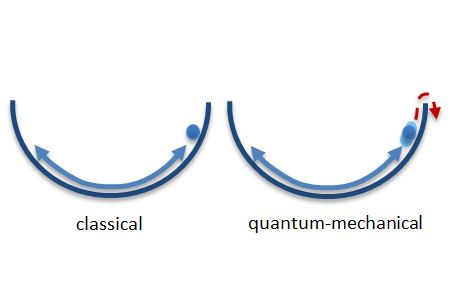
It is crucial to think about human dignity, transparency, explainability, as well as the potential impact on artificial intelligence systems that we are creating for various applications. First, we must understand what constitutes a "right", or "wrong" act and then train our AI to think ethically. We must then develop operationalization methods to avoid bias, so that the AI can make decisions based upon facts and not prejudice or irrationality.
Transparency
There are many ways to ensure transparency in ethical AI. Some people see transparency as an ideal, which allows us to make more informed decisions. Others support a non-discriminatory approach which minimizes negative selection and moral hazard. Transparency and transparency in AI allow us to foster trust and accountability as well as support greater autonomy. This is also a good approach for ethical goals and values. These are just some of the many advantages of transparency in ethical AI.
Firstly, transparency requires the system designer to be responsive to stakeholder needs. The system should be open to scrutiny and respond to legitimate queries and individual cases as fast as possible. Transparency is not only a tangible property. It can also be a continuous traceability of past events. This means that when AI systems are created, transparency must be a key feature of the design process. In order to assist in incident investigation, a system must provide detailed reports.

Explainability
AI offers a variety of technical advantages and capabilities that can lead to immediate ethical benefits. The International Risk Governance Center explains that AI can analyse large amounts of data and link data sources to create outcomes that transcend boundaries and across geographic borders. AI is capable of consistent, objective behavior which is not always predictable and can even free humans from repetitive tasks. This allows AI to help us gain a better view of the world around.
To be considered a principle of justice, all persons must have equal access to medical advances. Some medical AI systems are in violation of this principle. For instance, Obermeyer et al. According to Obermeyer and colleagues, an AI-based medical program discriminated against people of colour. Explainability can find important characteristics in a model that may indicate bias. Explainability will alert the relevant stakeholder groups to potential bias risks and their consequences. This can be done by identifying potential biases in AI models to prevent problems.
Traceability
It is essential to first describe the data that a machine learning model uses in order to trace it. This can be achieved by creating an ontology describing the phenomenon observed and the context in which it was learned. You must also describe in a traceable fashion the process of training or transforming the data. An ontology alone is not sufficient. It requires a framework to support data mining and data science.
Traceability is vital in order to make sure that decisions made by a company are transparent and trustworthy. This requires organizations to be able and willing to share the details of the development and implementation of the AI system. Traceability is the ability to trace all aspects of the process. This can be achieved through the use of a framework called "governance".

Human dignity
Many ethical AI debates have focused on AI's potential for eliminating jobs and threatening the environment. Many of these concerns are outdated and predictable, but others are relevant. Think of the future impact of digital technology on human labor: it will eliminate the industries of photographic film, cassette tapes, and vinyl records. Consider how driving a car can change the landscape. We must also be mindful of our personal dignity.
The European Group on Ethics in Science and New Technologies recommends a global rethinking on values in digital society. It suggests that human dignity should be considered a central part of how autonomous system interact with human beings. AI must respect and value people and give them the power to control the information and decisions made by the systems. AI must help create a better future.
FAQ
Who is the leader in AI today?
Artificial Intelligence, also known as computer science, is the study of creating intelligent machines capable to perform tasks that normally require human intelligence.
Today, there are many different types of artificial intelligence technologies, including machine learning, neural networks, expert systems, evolutionary computing, genetic algorithms, fuzzy logic, rule-based systems, case-based reasoning, knowledge representation and ontology engineering, and agent technology.
The question of whether AI can truly comprehend human thinking has been the subject of much debate. Recent advances in deep learning have allowed programs to be created that are capable of performing specific tasks.
Google's DeepMind unit, one of the largest developers of AI software in the world, is today. Demis Hassabis founded it in 2010, having been previously the head for neuroscience at University College London. DeepMind invented AlphaGo in 2014. This program was designed to play Go against the top professional players.
Is Alexa an AI?
The answer is yes. But not quite yet.
Amazon's Alexa voice service is cloud-based. It allows users use their voice to interact directly with devices.
The technology behind Alexa was first released as part of the Echo smart speaker. However, similar technologies have been used by other companies to create their own version of Alexa.
Some of these include Google Home, Apple's Siri, and Microsoft's Cortana.
Is AI possible with any other technology?
Yes, but this is still not the case. Many technologies have been developed to solve specific problems. However, none of them can match the speed or accuracy of AI.
AI: Good or bad?
AI can be viewed both positively and negatively. Positively, AI makes things easier than ever. No longer do we need to spend hours programming programs to perform tasks such word processing and spreadsheets. Instead, we can ask our computers to perform these functions.
On the other side, many fear that AI could eventually replace humans. Many believe that robots will eventually become smarter than their creators. They may even take over jobs.
Statistics
- By using BrainBox AI, commercial buildings can reduce total energy costs by 25% and improves occupant comfort by 60%. (analyticsinsight.net)
- Additionally, keeping in mind the current crisis, the AI is designed in a manner where it reduces the carbon footprint by 20-40%. (analyticsinsight.net)
- In 2019, AI adoption among large companies increased by 47% compared to 2018, according to the latest Artificial IntelligenceIndex report. (marsner.com)
- In the first half of 2017, the company discovered and banned 300,000 terrorist-linked accounts, 95 percent of which were found by non-human, artificially intelligent machines. (builtin.com)
- A 2021 Pew Research survey revealed that 37 percent of respondents who are more concerned than excited about AI had concerns including job loss, privacy, and AI's potential to “surpass human skills.” (builtin.com)
External Links
How To
How to Setup Google Home
Google Home is a digital assistant powered artificial intelligence. It uses sophisticated algorithms, natural language processing, and artificial intelligence to answer questions and perform tasks like controlling smart home devices, playing music and making phone calls. Google Assistant allows you to do everything, from searching the internet to setting timers to creating reminders. These reminders will then be sent directly to your smartphone.
Google Home seamlessly integrates with Android phones and iPhones. This allows you to interact directly with your Google Account from your mobile device. Connecting an iPhone or iPad to Google Home over WiFi will allow you to take advantage features such as Apple Pay, Siri Shortcuts, third-party applications, and other Google Home features.
Google Home offers many useful features like every Google product. Google Home can remember your routines so it can follow them. So when you wake up in the morning, you don't need to retell how to turn on your lights, adjust the temperature, or stream music. Instead, you can just say "Hey Google", and tell it what you want done.
These are the steps you need to follow in order to set up Google Home.
-
Turn on Google Home.
-
Hold the Action button in your Google Home.
-
The Setup Wizard appears.
-
Continue
-
Enter your email adress and password.
-
Choose Sign In
-
Google Home is now available